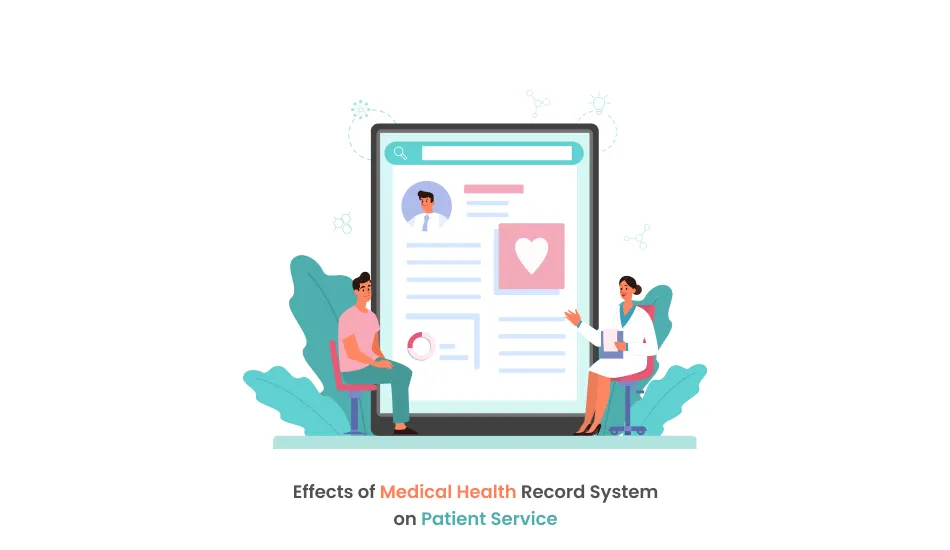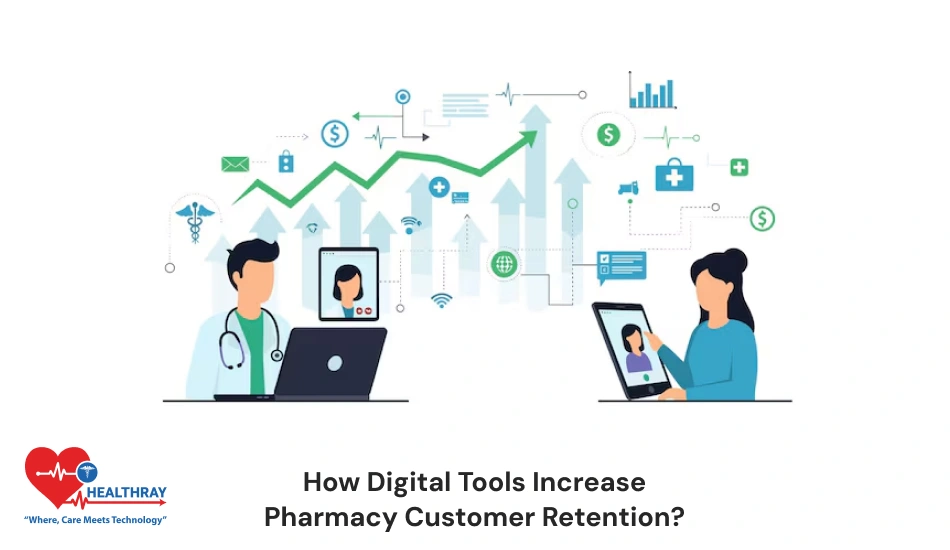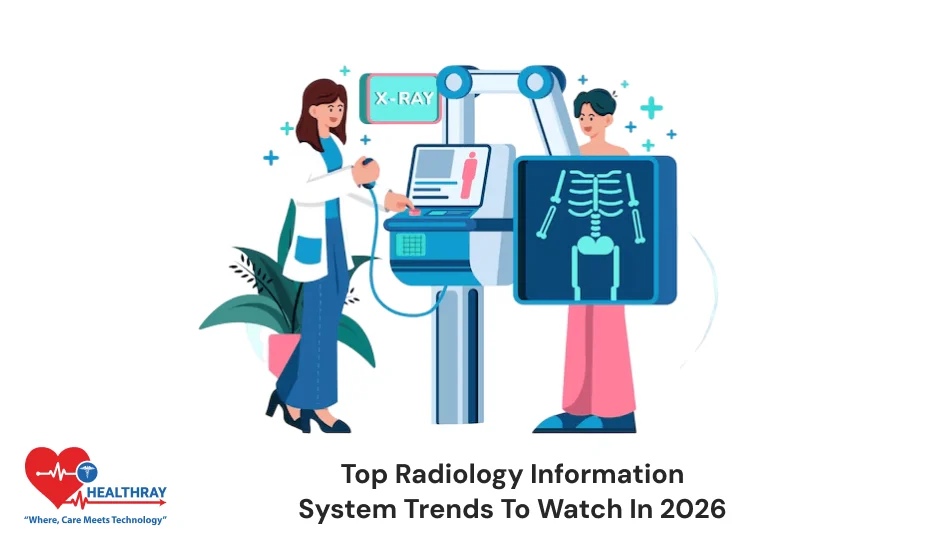Quick Summary
While across healthcare organizations, we found large queues and too much hassle in every department. Especially the clinical department. Moreover, this hospital situation requires sophisticated technology that can administer health care tasks efficiently, provide full support to healthcare workers, and facilitate more attention on patient care. Healthray, the medical health record system makes this dream come true. Here’s how :
Introduction
Medical health record systems create a variety of digital medical files and cover it with medical protocols. Furthermore, it is a leading technology that not only assists healthcare practitioners but is also effective for medical researchers as it is embedded with advanced level technology. This software maintains healthcare data that can be impracticable with traditional healthcare systems.
It contains varied data types such as stock data, supplier information, prescription data, patient data, historical records, and appointment history. Furthermore, it has automated bots that can render medical information and find out the mistakes in no time. It quickly captures medical data and improves the information quality.
The medical health record system can categorize data on the basis of desired factors. Moreover, it can be altered by adding or removing columns or we can say that classified information on a required basis. Applying healthcare protocols on it and can move to any healthcare practitioner.
Key Functions of Medical Health Record System
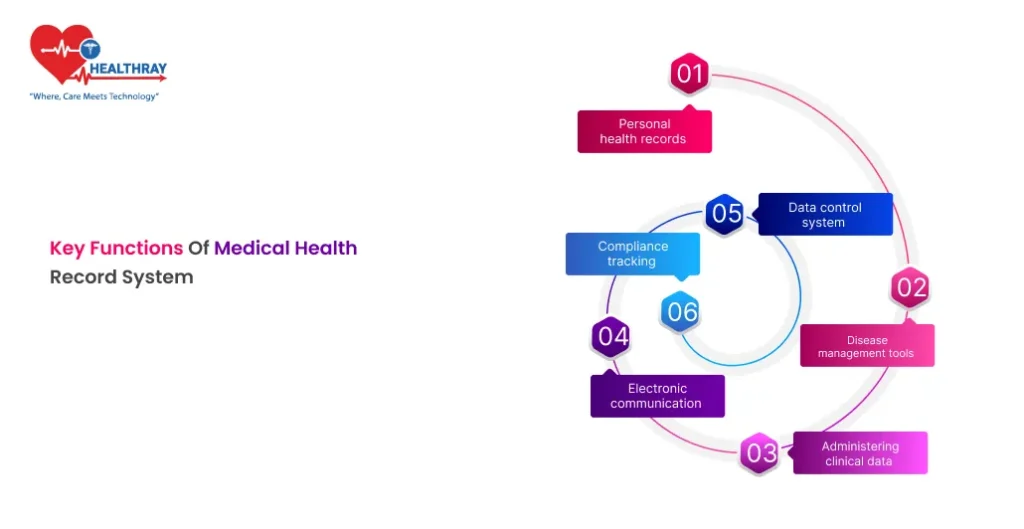
Medical health record system is the modernized software that can change the whole scenario and eradicates obstacles of health care organization. Furthermore, this system retains information in wide numbers and can automatically manages with innovative tools. It conserves direct and indirect costs in all medical divisions. The key functions of medical health record system are :
Personal health records
This data can be recorded and controlled by patients. Only several persons have claimed this right, mainly it is given to clinical departments and clients. If any file is shared to medical physicians then, it is mandatory to assent from patients. Moreover, it stores personal patients data along with their prevalent medical documents. Additionally, it simplifies interacting with healthcare specialists at any convenient time.
At the time of treatment, there are several procedures which would be conducted after the written agreement of the patient’s family. Furthermore, the electronic health record helps to create forms and take their consent digitally, which is merely a great proof. Consequently, patients are glad with those ultimate features that led to increased retention rate.
Administering clinical data
The medical health record system makes clinical information trust-worthy and stores each patient as well as healthcare information. Moreover, it converts complicated and unorganized information into organized manner. The electronic medical record software prepares new documents, stores older ones, and fabricates computerized presentation reports. Glimpse of below to know the gains of administering clinical data such as :
- Improves healthcare lifecycle
- Advances information quality
- Taking decisions quickly
- Minimizes information silo situation
- Increases data authenticity.
Disease management tools
EHR systems monitoring and storing tools that keep prescriptions report, medical record, and patients history with timely examining. Furthermore, this software properly scrutinizes the individual’s disease and makes powerful conclusions on the basis of saved data. Physicians use these tools to improve the patient’s medical condition. Ultimately, it enhances patient’s care.
Additionally, it can easily capture medical scanning pictures that simplifies to analyze them and compare with their previous medical images. The results can be highlighted and stored in the same platform. Besides, the medical practitioners generate evaluation reports in a matter of minutes that enhances employee satisfaction rate and work quality.
Electronic communication
The EMR software helps to connect with different healthcare practitioners and get right advice from them. Moreover, patients interact via messaging, video call, and phone call. Therefore, this platform has multiple options to connect. On the other side, practitioners can contact multiple clients at a single time. Also, this mode of connection in a system helps human resources for conducting interviews. Benefits of an electronic communication are :
- Reduces costs
- Source of earn revenue
- Easy to get feedback
- Transmit information speedily
- Patients get counsel from anywhere.
Data control system
Data control is the type of procedure that safeguards saved information and makes it more informative. Furthermore, the records comprise medical history, patient’s record, tracking reports, and protocol information.
The EHR system integrally follows the methodical procedure and it is the primary component of accurate tracking and generating reports. Moreover, it is a sub-component of information management systems. Therefore, it drives corrective action in the healthcare industry.
Compliance tracking
Electronic medical record systems help to formulate compliance reports, it can be drafted by any delegated medical practitioner. Furthermore, this system aids to monitor the employee tasks along with execution reports. This system provides internal checking that prevents costs and shields from minimizing hospital reputation.
The medical regulation needs to apply in each procedure of the administrative system, storing medical inventories, instrument calibration, and managing healthcare finances. Additionally, compliance tracking has been done through checking the assets and entering medical information. As a result, it increases healthcare efficiency and reduces risks.
Medical Health Record System Positively Effects on Patient Service
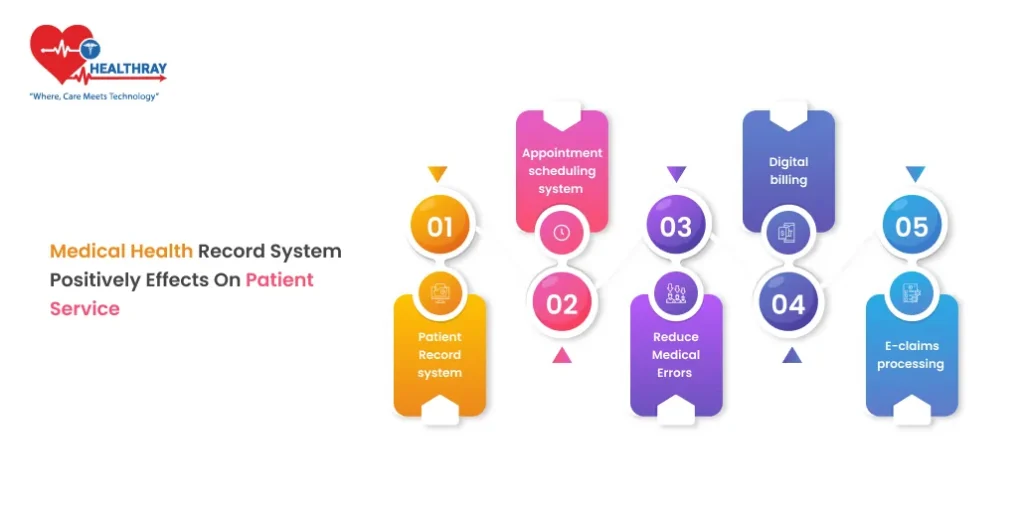
In the prevalent healthcare landscape, we analyze that providers don’t have more time to interact with patients and know their medical conditions in depth. Additionally, there is a large straight line for pre-consultation fees and separate lines for other types of medical bills.
Consequently, large resources are included in manually creating bills, they all are exhausted and have no time for integrated care. To comprehend this troublesome situation, the medical health record system has been developed. The integrated functionalities includes :
Patient Record system
Create a patient’s paper chart in the electronic version with no extra effort. Furthermore, electronic health records contain an array of data such as vital signs, invoicing records, progress notes, and test results. Furthermore, EMR software solution is the most feasible care that can be adopted by any health care organizations.
Medical health record systems unite many data along with their histories. Besides, it helps to draft treatment plans and can modify on the basis of progressive reports. The electronic health record (EHR) includes booking appointments, edit information, remote consultation, and recorded test results. Consequently, it enhances client satisfaction and provides efficient-care.
Appointment scheduling system
EHR implementation took your burden to book meetings with practitioners as it is more comfortable for clients and healthcare professionals. Furthermore, all booking timings are visible in the single dashboard and separate databases by filter.
This system runs on mobile devices that means clients can select their appropriate booking date and time. Additionally, patients can re-book appointments and notify prompt regarding cancel booking. As a result, it minimizes no shows.
Reduce Medical Errors
The digital healthcare system can save information with a few clicks and protect data by implementing best medical safety practices. Furthermore, it removes replicate tasks, depicts all data with full accuracy, and reduces transcription errors. It provides extensive safety to clients, creates precise prescriptions, and generates electronic test results. Advantages of minimize medical errors such as :
- Enhances patient outcomes
- Improve client safety
- Record accurate data
- Increases efficiency
- Protects harm.
Step towards digital era with our healthcare solution
Revamp your hospital facilities and embrace change for better healthcare management. Ease in managing and organizing large medical datasets leads to effective analysis. Seize the opportunity now!
Digital billing
The medical health record system eliminates paper invoices and improves invoicing workflows. Moreover, the digital billing template consists of patient’s personal data, medical services, and mention charge per service. At last, the total balance includes all medical services.
Medical payments can be done digitally to save time and resources. Additionally, it supports claims faster from third party vendors. Patients receive invoices with the payment amount. Consequently, it increases billing speed and improves job satisfaction.
E-claims processing
With the medical health record system, submitting your medical claims in a more easy way. Furthermore, this software streamlines the insurance claim procedure. This tool is highly popular for a quick reimbursement process. This makes a stronger bond between medical practitioners and clients. The primary benefits of digital claim processing are :
- Simplifies claim monitoring
- Enhances patient safety
- Improves accuracy
- Minimizes overhead expenses
- Reduces operational costs.
Cut-down Expenses through Premier Electronic Medical Records
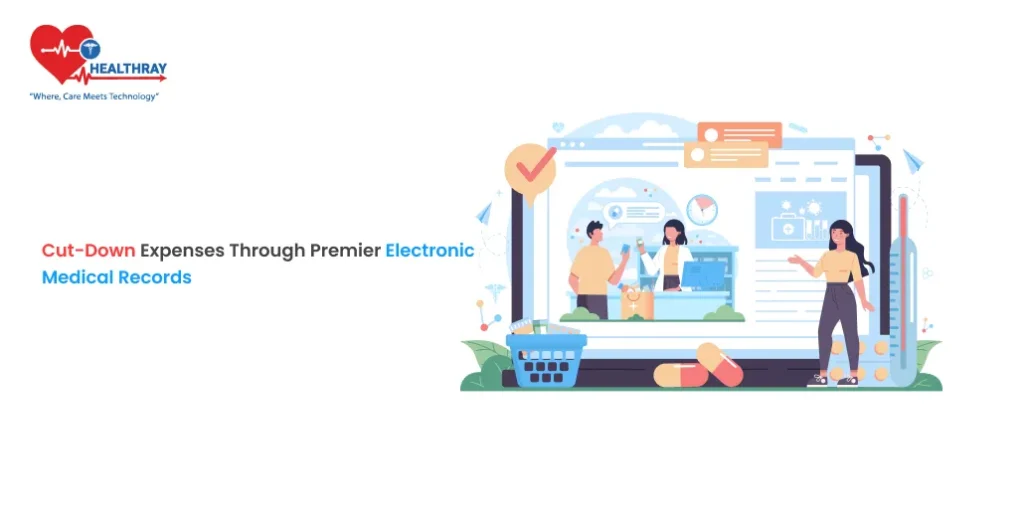
Electronic medical records is the archival software solution that can hold your information for a longer period of time. Furthermore, this software has included a variety of ways to cut-down medical expenses. Primarily, it is the electronic system that administers clinical tasks from storing details to calculating all medical income.
This health information technology facilitates secure electronic communication with the medical practitioner. Furthermore, it can retain a volume of medical information that reduces documentation, placing costs and saves storage charges. It manages each staff of every health segment effectively.
Moreover, this software can allocate work appropriately based on their work experience and academic qualification. Consequently, it creates better medical infrastructure, increases providers salary, improves patient’s contentment level, and increases client retention rate.
Conclusion
The medical health record system includes sophisticated technology that facilitates immense support to clinical workers and attention to the patients. Furthermore, the key functions of the medical health record system are personal health records, administering clinical data, disease management tools, data control system, electronic communication, and compliance tracking. It fosters numerous tools such as patient record system, appointment scheduling system, reduce medical errors, digital billing, and E-claims processing. Therefore, it increases clients safety and minimizes costs.
